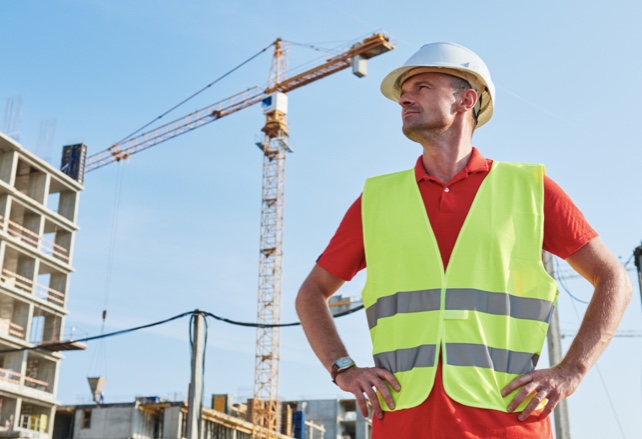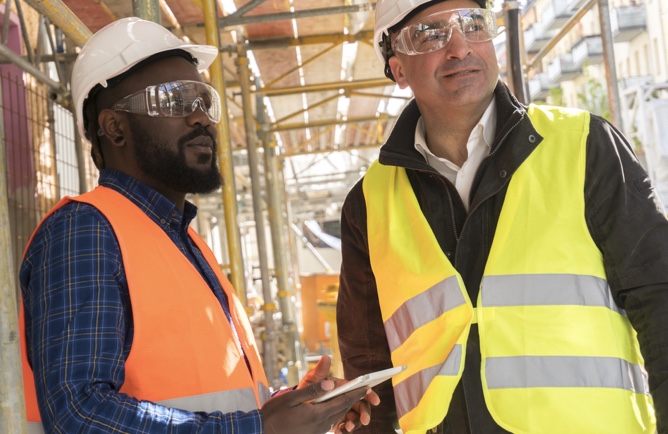Donald Meeker
There’s a big difference between having a car and knowing how to drive it, or having a guitar, and knowing how to play it. If you’ve just thrown your safety vest on after being handed one by your employer, you might be working from a similar blind spot. Sound like an exaggeration? Not if you care about your health and safety on the job site. A safety vest, such as a high visibility safety vest or reflective vest, can be much less effective if worn the wrong way. Worse still, it can even become a hazard under certain circumstances. In this article, we’ll look at the basics of how to wear a safety vest the right way.
Why Safety Vests Are Important
When you put on your safety vest, are you aware of why you’re wearing it? It might seem obvious, but it’s worth remembering the main reason why safety vests are important: to make workers visible to people operating heavy machinery. Everything about safety vests should be in service of the end goal to increase visibility and protect life and limb. If your vest isn’t fulfilling the requirements we’ll discuss in this article, it might not be offering the necessary protection.

Understanding the ANSI 107 Standard
It’s important to know whether or not you have the right type of safety vest for the job at hand, so make sure you’re familiar with the different types of safety vests. First, you should be familiar with the ANSI 107 standard and know whether your job requires an ANSI-compliant safety vest. Some of the workers who typically need to wear ANSI safety vests include:
- Road maintenance workers
- Public safety personnel who work on roads, such as highway patrol and paramedics
- Airport ground personnel
- Construction workers
Once you’ve determined your required ANSI level, it’s time to determine if your safety vest is equipped with additional features that will affect its function and how you wear it.
Common Safety Vest Features
Make sure to note if your job requires your safety vest to be equipped with any of the following features:
- Reflective Safety Vests: Reflective vests are designed for workers on roadways and in other areas where workers may be working in low-visibility conditions. The ANSI 107 standard requires certain amounts of reflective material on ANSI-rated vests.
- Breakaway Safety Vests: These safety vests are equipped with a “breakaway” feature that helps prevent caught-in accidents. If the vest accidentally becomes entangled in machinery, it’s designed to protect the worker by breaking open its closures, making it easier to remove quickly.
- Flame-Resistant Vests: Some workplaces may require vests that are designed with flame-resistant (FR) materials. These vests are designed to standards set by organizations like the National Fire Protection Association and use fabrics that extinguish themselves rather than continuing to burn when exposed to flame.
- Incident Command Vests: Some vests are designed to help identify workers with different job functions, such as those worn by emergency response crews using the incident command system (ICS).
If your safety vest isn’t equipped with features that you think are required for your job function, talk to your supervisors and take a look at your employee safety manual.

How Should a Safety Vest Fit?
Getting the right fit on a safety vest is important for making sure the vest functions correctly and doesn’t present a safety hazard. Follow these tips to make sure your safety vest has a good fit:
- The vest shouldn’t be excessively tight. A vest that isn’t comfortable to wear is less likely to be worn and can present a dangerous distraction.
- The vest also shouldn’t be so large that it flaps around by itself or gets caught on objects. An oversized vest can become a serious caught-in hazard even if it’s equipped with a breakaway.
- Employers should provide appropriately sized safety vests for workers who need larger- or smaller-sized vests.
- Safety vests should be compatible with any other required PPE. Vests designed for fall protection compatibility, for example, will often include a built-in D-ring for harness attachment.
- Safety vests should be made from a breathable material, especially when working in a hot climate. Look for a breathable polyester mesh that allows air to circulate while you’re working.
How Should a Safety Vest Be Worn?
Similarly, a safety vest isn’t much good if it’s not being worn correctly. These tips will help ensure that your safety vest is meeting the needs of your workplace:
- A safety vest should be worn consistently in all areas where it’s required. When a safety vest is inconvenient to wear, it can be tempting to go without “just this once,” but once is all it takes for an accident to happen.
- Make sure your safety vest is properly fastened all the way each time you put it on. A safety vest that’s flapping around freely is at much greater risk of becoming caught in machinery or otherwise causing injury.
- A safety vest shouldn’t be covered up by anything, such as other garments, stickers, decorations, or anything else. If the safety vest can’t be fully seen, its usefulness decreases significantly.
- Safety vests that get excessively dirty may have their visibility compromised, so a safety vest should be regularly washed according to its care instructions. If your vest gets dirty often, consider getting a black-bordered vest that helps hide the dirt.
- If you have multiple safety vests, don’t assume that they’re all rated for the job you’re doing. Check the individual ANSI rating of each vest to ensure that it’s up to standards.
- Safety vests are a line of defense, not a magical cloak that protects you from injury. Continue to follow best practices such as staying out of earthmover blind spots even when you’re wearing a safety vest.
Like a seatbelt, a safety vest will only fulfill its purpose when it’s worn properly and consistently. By following the tips we’ve talked about here, your safety vest will be more likely to do what it’s designed to do.
